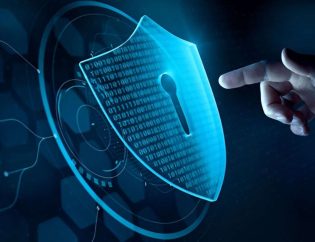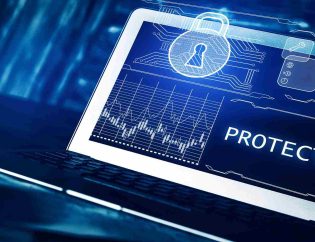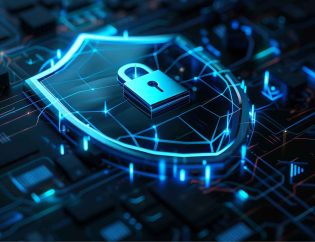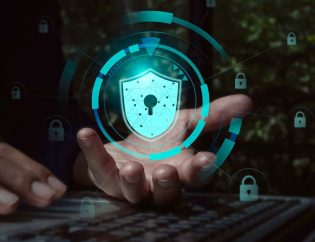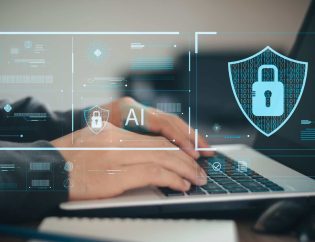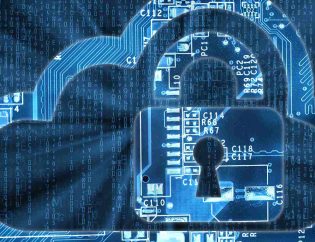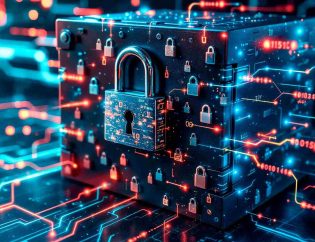
Table of Contents
Introduction
Understanding Dark Web Threats to Endpoints
Common Exploits Targeting Endpoints
How Cybercriminals Attack Systems
Effective Security Measures for Protection
The Importance of Endpoint Security Solutions
Case Study: Real-World Breach and Lessons Learned
Strategies for Continuous Security Improvement
Conclusion
FAQs
Introduction
The dark web has made cyber threats more dangerous than ever. Hackers sell stolen passwords, malware and hacking tools, putting businesses and individuals at risk. These attacks can lead to data leaks, financial loss and legal trouble. To stay safe, companies should use encryption, multi-factor authentication and real-time threat detection. Staying updated on new threats helps improve security and prevent cyberattacks.
Understanding Dark Web Threats to Endpoints
The dark web is a hidden part of the internet where cybercriminals buy and sell harmful tools. It is like an underground market for stolen data and hacking software. Many big cyberattacks start from these secret websites, making strong cybersecurity more important than ever.
What Hackers Buy and Sell on the Dark Web:
- Stolen passwords – Login details for bank accounts, emails and company systems.
- Hacking tools – Programs that help criminals break into computers.
- Malware and ransomware – Harmful software that steals data or locks files for ransom.
- Credit card details – Stolen financial information used for fraud.
Because of these dangers, businesses and individuals must stay one step ahead. Using strong passwords, multi-factor authentication and updated security software can help protect against these threats.
Common Exploits Targeting Endpoints
Devices like computers, laptops and mobile phones are often the weakest points in security. Hackers target these devices to steal information, cause damage, or take control. Here are some common cyber threats that put endpoints at risk:
1. Ransomware Attacks
- Hackers lock your files and demand money to unlock them.
- Victims must pay a ransom, usually in cryptocurrency.
- Businesses can lose important data and stop working.
- Regular backups and strong security software can help prevent this.
2. Credential Theft
- Hackers steal usernames and passwords to break into accounts.
- They use fake emails or websites to trick people into sharing their details.
- Stolen passwords are sold on the dark web for illegal use.
- Two-step verification (MFA) makes it harder for hackers to get in.
3. Zero-Day Exploits
- Hackers find hidden software weaknesses and use them before companies fix them.
- These attacks allow criminals to break into systems without detection.
- Companies release updates to fix security flaws once they find them.
- Keeping software updated helps protect against these attacks.
4. Keyloggers and Spyware
- Keyloggers record everything you type, including passwords and credit card details.
- Spyware secretly watches what you do and sends your information to hackers.
- These programs often come from free downloads or suspicious emails.
- Using antivirus software and avoiding unknown links helps prevent infection.
By knowing these risks and taking simple security steps, you can keep your devices safe from hackers.
Table: Comparison of Endpoint Threats and Mitigation Strategies
| Threat Type | Impact Level | Common Mitigation Strategies |
|---|---|---|
| Ransomware | High | Data backups, endpoint detection |
| Credential Theft | Medium | Multi-factor authentication (MFA) |
| Zero-Day Exploits | High | Regular patching, network monitoring |
| Spyware | Medium | Anti-malware solutions, endpoint isolation |
How Cybercriminals Attack Systems
Cybercriminals use different tricks to break into computers and steal information. They take advantage of weak security and spread harmful software. Here are some common ways they do this:
1. Fake Emails (Phishing Attacks)
- Hackers send emails that look real but are actually fake.
- These emails may ask you to click on a link or enter your password.
- Clicking the link can install a virus or steal your personal information.
- To stay safe, do not open emails from unknown senders and check for spelling mistakes or urgent messages that seem suspicious.
2. Harmful Downloads
- Some websites offer free software, games, or music, but they may contain hidden viruses.
- Once downloaded, the virus can steal your data, track your activities, or damage your device.
- Hackers also attach viruses to fake software updates.
- Always download from trusted websites and use antivirus software to scan new files.
3. Weak Passwords
- Many people use easy passwords like “123456” or “password,” which hackers can easily guess.
- Hackers use special programs to try many passwords until they find the right one.
- If an account doesn’t have extra security (like two-factor authentication), it is easier for hackers to break in.
- Use strong passwords with a mix of letters, numbers and symbols to keep your accounts safe.
4. Outdated Software
- Hackers look for weaknesses in old software that has not been updated.
- These security flaws allow them to steal data or install viruses.
- Companies release updates to fix these issues, but many people forget to install them.
- Keep all apps, browsers and operating systems updated to stay protected.
By understanding these risks and following simple safety steps, you can protect your computer and personal information from hackers.
Effective Security Measures for Protection
Cybercriminals are always looking for ways to attack systems. To stay safe, businesses and individuals must use strong security measures. Here are some important steps to protect against cyber threats:
1. Smart Threat Detection
- Hackers often create new types of attacks that can go unnoticed.
- Using Artificial Intelligence (AI), security tools can find unusual activity and warn users.
- These tools help stop cyberattacks before they cause harm by quickly identifying threats.
2. Regular Security Checks
- Many attacks happen because of weak spots in security that go unnoticed.
- Regular security checks help:
- Find outdated software that needs updates.
- Check for weak passwords that hackers can break.
- Identify security gaps before cybercriminals do.
3. Separate Network Areas
- If hackers enter a system, they try to spread the attack to other areas.
- Network segmentation divides a system into smaller parts, so an attack in one area does not affect everything.
- This is especially useful for protecting important data like financial records and customer details.
4. Training Employees on Cybersecurity
- Many attacks happen because employees make mistakes, such as clicking on unsafe links.
- Cybersecurity training helps employees:
- Recognize fake emails (phishing) and avoid scams.
- Use strong passwords and two-step verification.
- Be careful with USB devices that may contain malware.
- When employees know how to stay safe online, the risk of attacks is much lower.
By using smart security tools, keeping software updated and training employees, organizations can greatly reduce the risk of cyberattacks.
The Importance of Endpoint Security Solutions
Cybercriminals often target endpoints like computers, mobile devices and servers. To protect these devices, businesses and individuals need strong security strategies. Here are three key security measures:
1. Real-Time Threat Intelligence
- Monitors network activity 24/7 to detect and block cyber threats in real time.
- Uses AI and machine learning to identify unusual behavior and prevent attacks.
- Sends instant alerts to security teams, allowing quick responses to potential risks.
2. Strong Data Encryption
- Converts sensitive data into a secure code that only authorized users can access.
- Protects financial records, passwords and personal data from hackers.
- Ensures compliance with security regulations, reducing the risk of legal issues.
3. Privileged Access Management (PAM)
- Restricts access to sensitive information, allowing only authorized personnel to view or modify it.
- Reduces the risk of insider threats by limiting unnecessary permissions.
- Tracks user activity to detect and prevent unauthorized actions.
By using real-time monitoring, encryption and strict access controls, businesses can protect their endpoints from cyber threats and keep their data safe.
Case Study: A Real Cyberattack and Lessons Learned
A large bank suffered a cyberattack because its security was weak. Hackers bought employee login details from the dark web and used fake emails (phishing) to steal more data. Since the bank had weak passwords and no extra security layers, attackers easily accessed customer financial data.
Impact of the Attack
- The bank lost millions of dollars.
- Many customers closed their accounts.
- The company faced heavy fines for poor security.
- The bank’s reputation suffered badly.
Lessons Learned
After the attack, the bank improved security by:
- Using strong passwords and regular updates.
- Adding two-step verification for logins.
- Training employees to spot phishing emails.
- Checking security systems regularly.
Key Takeaway
Weak security invites cyberattacks. Companies must take proactive steps to protect customer data and avoid huge losses.
Strategies for Continuous Security Improvement
Organizations should adopt an ongoing security approach:
- Implementing Zero Trust Security Frameworks – Reducing trust levels across networks.
- Regular Employee Cybersecurity Training – Preventing human errors leading to breaches.
- Deploying Endpoint Detection & Response (EDR) Solutions – Real-time monitoring for quick threat mitigation.
- Security Patch Management – Ensuring all systems are updated against vulnerabilities.
Customer Testimonial
“Since adopting Hyper Secure endpoint security solutions, our company has significantly enhanced its cybersecurity posture. Their proactive monitoring and advanced threat intelligence have helped us prevent potential cyberattacks before they escalate.”
Conclusion
With cyber threats increasing every day, endpoint security is more important than ever. Hackers use stolen data, malware and weak security systems to attack businesses. To stay safe, companies need real-time monitoring, advanced threat detection and employee training.
Hyper Secure, a leading endpoint security companyy, provides powerful security solutions to protect businesses from cyber threats. With advanced encryption, threat intelligence and continuous monitoring, Hyper Secure helps organizations prevent breaches, secure sensitive data and stay compliant with cybersecurity standards. Investing in Hyper Secure solutions ensures strong protection against evolving cyber risks.
FAQs
What are the most common cyber threats targeting devices?
Ransomware, phishing attacks, spyware and unpatched vulnerabilities are common threats that hackers exploit.
How does weak authentication put businesses at risk?
Simple or reused passwords make it easier for attackers to gain unauthorized access to critical systems.
Why is regular software updating necessary?
Updates fix security flaws and protect devices from newly discovered vulnerabilities that hackers might exploit.
How can businesses strengthen their cybersecurity strategy?
Implementing multi-factor authentication, network segmentation and real-time monitoring can significantly reduce risks.
How does Hyper Secure help organizations stay protected?
Hyper Secure provides advanced threat detection, strong encryptionand proactive monitoring to safeguard businesses from cyber threats.
